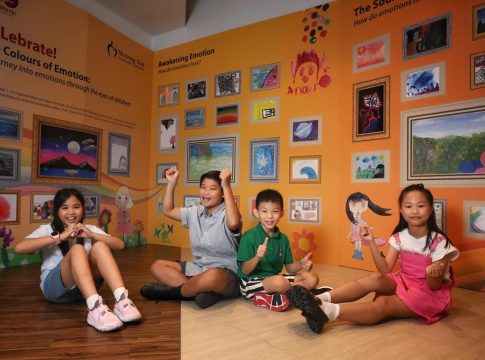The Therapeutic Power of Art in Children’s Mental Wellness
In today’s fast-paced world, young minds often find themselves under immense pressure. The weight of academic expectations and social dynamics can lead to feelings of anxiety and uncertainty. Fortunately, art can be a soothing balm for emotional turmoil, as demonstrated by the inspiring stories of children participating in art workshops in Singapore.
Art as a Emotional Outlet
For many children, like 10-year-old Chua Kah Ing, engaging in artistic expression becomes a refuge during difficult moments. Kah Ing describes how her watercolour painting of a full moon over a mountain invokes a sense of calm, showcasing how colour can mirror emotional states. She specifically chose blue to represent tranquility amidst sadness and pink to illustrate happiness.
This sense of release is not just an individual experience. The SEL (Social Emotional Learning) art workshops, organized by Morning Star Community Services, provide a structured environment for children to explore and articulate their emotions through creative means. By promoting self-expression, these workshops help children develop essential skills in emotional regulation, which is vital for overall mental wellness.
Understanding Emotional Regulation
Emotional regulation is the ability to manage and respond to emotional experiences. Many children, particularly in high-pressure environments, struggle to articulate their feelings and may not yet have the tools to cope effectively. Art can facilitate this process, allowing children to visualize emotions like sadness, joy, and calmness through colours and shapes.
Notably, 14-year-old Samuel Lee found solace in the vibrant hues of his painting, expressing how they impact his emotions. For him, the combination of reds, greens, and blues not only calms him but serves as a reminder of nature’s beauty, helping him better understand his emotional landscape.
Practical Steps to Foster Emotional Learning through Art
Creative workshops like those offered by Morning Star encourage reflection and emotional growth in children through immersive experiences. Here are a few strategies that can empower children to express their feelings through art:
-
Sensory Exploration: Encourage children to associate music with emotions. Play a piece of music and prompt them to visualize colours or shapes that emerge from their feelings during the experience.
-
Creative Expression: Provide materials such as paints, markers, or clay, and let children create freely. This allows them the space to process and communicate their emotions without the constraints of words.
- Reflective Discussion: After creating, encourage children to talk about their artwork. This can help them to identify their feelings more clearly and develop emotional literacy.
Through these explorative practices, children can learn to navigate their emotional worlds with more clarity and confidence.
Conclusion: Building Resilient Minds
Ultimately, art becomes a powerful avenue for understanding and managing emotions, a notion beautifully captured in the exhibition "SELebrate! – The Colours Of Emotion." This initiative highlights how creativity aids in the emotional development of children, helping them transition from the overwhelm of feelings to a more balanced state of mind.
The encouraging stories of Chua Kah Ing, Samuel Lee, and others illustrate that through art, children can process their experiences and grow into emotionally resilient individuals. In nurturing an environment where feelings are recognized and validated, we empower our children to thrive amid life’s challenges.

Covers wellness, nutrition, mental health, and daily life tips.
Bio: Talia brings a background in health journalism and holistic living to help readers live better, one tip at a time.

